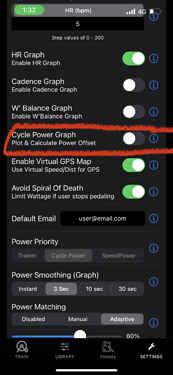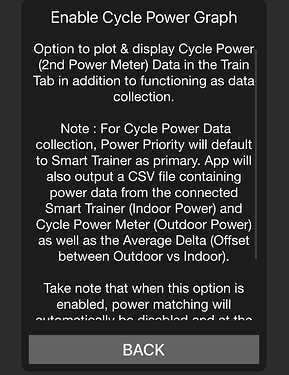Yes. Intervals would work w/ TR if you feed the data from TR into intervals. I believe the best way to do that would be to sync TR data into dropbox and then link dropbox to intervals. (as Garmin now doesn’t forward data that is not recorded via their devices - actually, many companies are not doing that anymore - Strava also did try, tho they backtracked on that)
In terms of what you want to achieve, comparing power meters from within the same FIT file, that’s not doable AFAIK. Tho as others and myself has indicated, there are other tools you can try by using 2 different devices to record the data.
Or if you have an iOS device, you can try this app I wrote (https://forum.intervals.icu/t/breakaway-indoor-training-app-now-with-intervals-icu-calendar-integration-workout-of-the-day/) and use the below option within settings. This will both plot the data on screen (your Smart Trainer Power and your Assioma). It will also output a simple CSV file you can export into excel/google sheets and play around w/ the data. (The data is all sync’ed up so you don’t have to do any maths to line it up)
I added this feature for powermatch to calculate a fixed (average) offset and to look at my own trainer vs my Assioma. (eventually i found out that basically, my assiomas we so accurate or my pedaling style was so bad that there was quite a lot of variations in my power.
if you do try the app, let me know what you think.

